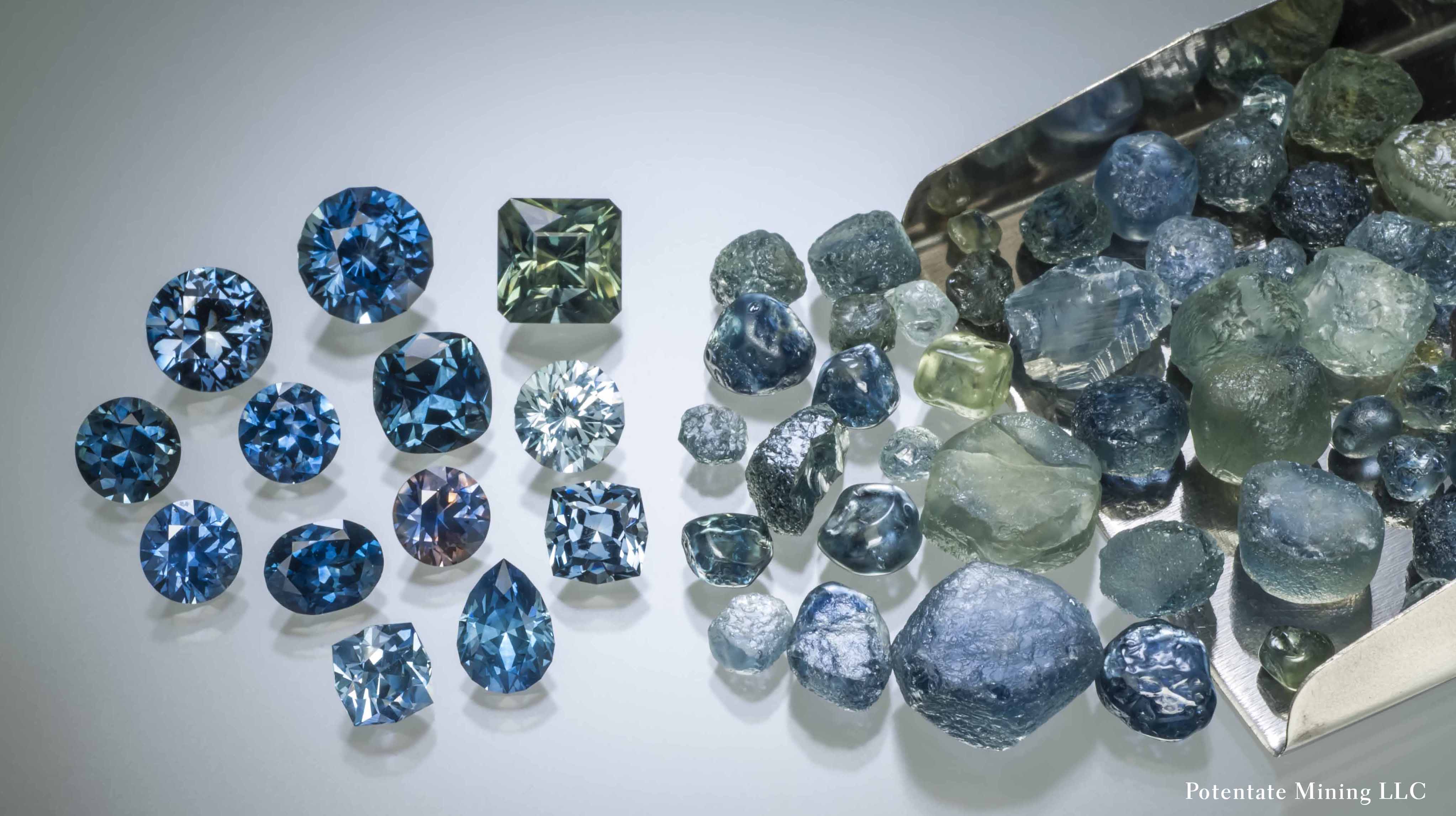Montana Sapphires


History
Even though the gold rush of the 1860s ground to a halt in the western USA, it spurred the discovery of sapphires in Montana. Miners paid no attention to the unassuming rocks clogging their pans, however the small blue pebbles would soon be the region’s path to riches.
Montana sapphires had a tumultuous journey, as they were disregarded as worthless from the start. Because cutting and refining the rough wasn’t widely done in the USA, the mining and production of gem-quality sapphires was uneconomic at the time. However, sapphires are notably hard - only able to be scratched by diamonds - therefore making the rough initially desirable as wear-resistant watch bearings. It wasn’t until legendary Tiffany and Co. gemologist, George Frederick Kunz, recognized Montana sapphires’ beauty in 1895 that the gems began their rise to popularity in jewelry.

Exquisite Color
At the time of their discovery, most American consumers believed true sapphires to be only those brought in from abroad. However, the natural deep “cornflower blue” color of Montana's Yogo Gulch sapphires quickly drew attention. Yogo sapphires have unmistakable trace element signatures of manganese, chromium, titanium, iron and gallium that are different from other sapphires. Even as rough, these untreated stones had a high clarity and immaculate color, making them unique and enticing.
The areas of the Missouri River, Rock Creek, Dry Cottonwood Creek, and other areas across Montana are associated with “fancy sapphires” that range in color. While many people associate the term “sapphire” with a dark hue, Montana mines also unearth gems ranging from light pink, purple, orange, yellow, and green, to pale blues. Heat treatment of the rough brings out the highly desirable color variations, allowing for the rainbow of beauty we see in our cut sapphires today.

Traceable Steps
Montana sapphires are easily traceable, as they come from small, commercial mines. Each sapphire purchase supports a local family and small business. The sapphire districts support the local Montana economy by turning out gems and bringing in tourists. These pebbles are found in the gravel all throughout the area, making it a great item for amateur prospectors to hunt.
Production, treatment, and cutting of the stones generally all take place in the USA today, allowing for the supply chain to meet a high standard of ethics. Also, the purchase of Montana sapphires decreases the carbon footprint, by eliminating the need for transporting gemstones from overseas.

Our Partnership
Eliza Page creates jewelry using hand-selected sapphires sourced by Kimberly Collins Gems from the Rock Creek region, which is known for the richest sapphire deposits. The high iron content in Rock Creek sapphires means that most are a light green color and not the traditional blues. However, many natural yellows, oranges, and pinks of high clarity are found here. The development of heat treatment during the 1970s and 1980s allowed this area’s sapphire rough to be treated to the deep blue color known and beloved today.
Rock Creek has had a considerably high level of sapphire production when compared to the other alluvial deposits across the state. Many professionals believe this to be the only region that can economically produce sapphires alone. This is what has led to the success of Gem Mountain and Potentate mines, the sole mining entities in the region. They output some of the highest quality and noteworthy gem-quality stones of the area.

Shop All Montana Sapphire Jewelry
Shop all of our ethically mined jewelry featuring Montana sapphires here.
